Postural gymnastics aims to improve awareness of how a person is in their body, moves in the environment and tries to make it as comfortable as possible.
This gymnastics is useful for both prevent that to manage some issues which concern in particular the vertebral column, and improve problems such as neck pain, scoliosis and low back pain which can be aggravated by bad postures.
In fact, posture is the way in which each of us faces the need to stay in space. It affects the way we stand, sit at the computer or in the armchair. Posture influences many aspects of our life so it is important to train and improve it thanks to postural gymnastics.
However, this type of gymnastics must be a personalized approach as the proposed exercises serve to improve one's body awareness and flexibility. They have the goal of learning to "feel" the movement and change one's postural attitude in everyday life.
Over time, different methods of approach to posture have developed which all aim equally at individualization. Postural re-education or the method Mézières and the rehabilitation technique most used today. Discover benefits e examples of postural exercises to relieve back and neck pain.
Postural gymnastics: what is it?
Postural gymnastics is a set of exercises that aim to improve posture.
These exercises have one therapeutic and preventive purpose thanks to the improvement of posture, but also of mobility. Hence, they are effective for managing joint and muscle pain.
The ultimate goal is to improve your posture in everyday life and perform the movements in a more correct and conscious way, favoring the comfort of our body.
Posture: what it is
Posture is the set of muscle adaptations to be put in place to approach the physical space and react to the force of gravity in relation to one's personal experiences but also to the physical, mental and emotional state.
So, it must guaranteeing man the balance both in conditions of dynamic and static activities.
Man is the first animal to move in the space that surrounds him in bipedia. This milestone was achieved thanks to a series of evolutionary steps that led toadaptation of the tonic muscular system and the development of neurological connections that can manage this condition.
From about one year of age, the child begins to learn walking. He experiences the world around him and learns a series of mechanisms that help him develop the neurological connections responsible for balance.
Normally, the complete maturation of the postural tonic system, who is the one who manages the standing station, takes place around the age of eleven. It is the product of tactile and pressure stimuli coming in particular from foot but also from proprioceptive stimuli related to muscles, joints, tendons and even organs.
Furthermore, one should not neglect theinfluence of the vestibular system (labyrinth, ear) on our balance and of the reticular substance belonging to the cerebellum. An important importance on posture is also the visual and masticatory systems.
All these inputs are managed centrally in the brain which is informed of how the body is placed in space and how it can move to have a situation of comfort and balance.
Posture correctors to prevent back problems
Postural correctors can help you have a correct posture if, for example, you spend many hours at the computer.
They are effective in preventing back pain, neck and lumbar pain. However, the advice is to carry out a medical examination to assess the actual need for the corrector.
Discover the ranking of the best posture correctors.

Postural gymnastics for all ages
It is a useful tool, it is suitable for all ages but with different objectives.
For adults of working age, it is useful in managing postures related to specific tasks. They can be corrected in order to prevent or eliminate annoyances and problems that may have arisen due to wrong loads or repetitive movements.
While in theelderly can be useful for the maintenance of strength and elasticity body structures to prevent but also better manage the physiological aging and its consequences on the postural tonic system.
Instead, in the child and adolescent, postural gymnastics has mainly the goal of building an adult with increased body awareness and your posture.
In fact, in this age group we mainly see the paramorphismi, Or the postural vices. For example, the scoliotic, hyperkyphotic or hyperlordotic attitude of the spine.
All these properly intercepted postures can be corrected thanks to the gynasty, coming to prevent the establishment of a definitive situation that in some cases can lead to a real dysmorphism, in which there are modifications of the structure of the spine.
Therefore, it is good that paramorphisms and dysformisms are intercepted and managed in an integrated way, with dedicated medical and health figures.
In fact, at that age there is the greatest capacity for both motor and cognitive learning. So the'early teaching of correct postures, but also muscle strengthening and elasticity work can act as a prevention of problems in adulthood.
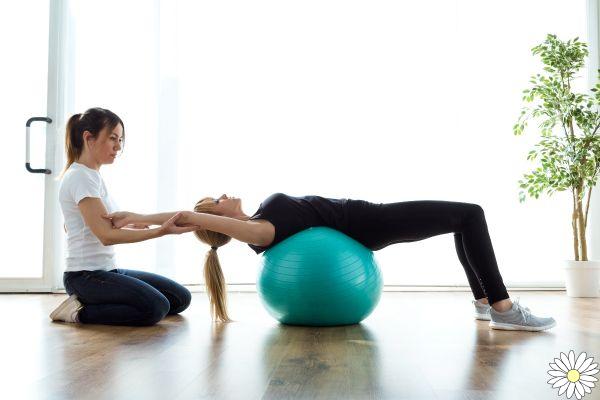
What it is for and how it works
The postural gymnastics session lasts on average about an hour and a half during which the attention is addressed in an integrated way starting from respiratory musculature up to the antigravity one.
I abdominal and paravertebral muscles guarantee the possibility of standing upright. The muscles of the pelvis are also involved in standing and in particular in walking.
Il therapeutic result of postural gymnastics it is obtained through specific muscle strengthening work.
Indeed, some muscles rated as weak they can be responsible for poor posture. In the same way, the elasticity and mobility of some regions that are in conditions of shortening and restriction of freedom must be assessed. They can contribute to the onset of pain or spoiled postural attitudes and there are specific passive and active stretching exercises.
Finally, we must consider a job that aims at restoration of mobility which must be not only free but also correct in its execution, so that this is the best possible, economical and comfortable for the person to restore a correct posture in his daily life and prevent the onset of pain and maintain a good postural state.
How a postural gymnastics session works
The attention is paid in particular to the execution of the exercises that must be repeated slowly to increase awareness of the movement itself and automate it.
This aspect is privileged over the number of repetitions, which will be of secondary importance.
In addition, it is essential during the sessions to focus on proper breathing which must constantly accompany the practice.
Il number of sessions per week it also depends on the objective with which you start the journey. It ranges from a minimum of once a week to a constant maintenance with exercises practiced a few minutes every day.
La home practice is not recommended as an initial approach as the exercises may not be done correctly. Therefore, if not controlled by a specialized operator, they could bring more problems than benefits.
But the practice at home can be agreed with the specialist once you have learned the exercises in the correct way to maybe do a maintenance work and prevention over time.
Depending on the specialist, the session can have a cost ranging from 25 euros to 60 euros, including the program evaluation and identification visit.

Types of postural gymnastics
Il metodo Mézières
Pain and muscle tension indicate, according to Françoise Mézières, that there is an imbalance in the body.
Over time, different methods of approach to posture have been created, among the best known is the method Mézières created in the 40s. This method is based on the concept that posture is influenced by the balanced functioning of muscles and joints and vice versa.
A correct posture helps a free and harmonious function. The muscle chains involved in the paramorphisms are analyzed and identified. During the session some specific passive postures associated with breathing that re-harmonize the motor patterns and allow to restore balance.
As for the spine, this technique can be indicated for:
- Low back pain
- discopathies
- sciatica
- Scoliosis
- hyperlordosis
- Stiff neck.
This therapy is also addressed to those who are sedentary and want to prevent back problems.
Global postural re-education
From this method the Global Postural Re-education (RPG) by Philippe Emanuel Souchard. It shares the same principles as the Mézières method by identifying eight muscle chains to work in a specific way with postures to obtain a relaxation and a re-harmonization of the system.
Treatment of RPG is carried out by means of postures performed in standing, sitting or lying down. After the treatment with the therapist it is possible to perform self-postures at home to maintain the results obtained.
This therapy is indicated in problems such as:
- Flat feet
- Knee valgus
- Scoliosis
- Cervicalgia.
Furthermore, it is an excellent prevention system for postural pathologies.
Given the peculiarities of this gymnastics it is clear that based on the subjective problems and objectives it is important to turn to professionals specialized in the sector.
Who to contact
Posturology can be practiced by physiotherapists and massage therapists to contact in particular in case of specific problems. Instead, the chinesiologo it can help to prevent and not in the presence of overt or acute pathologies.
The individualization of the session is of fundamental importance. The advice is to do some single sessions and not group.
Therefore, each according to their subjectivity must follow a personalized postural gymnastics program. In fact, there can be more than one cause behind the same discomfort and the application of pre-packaged protocols is not recommended.
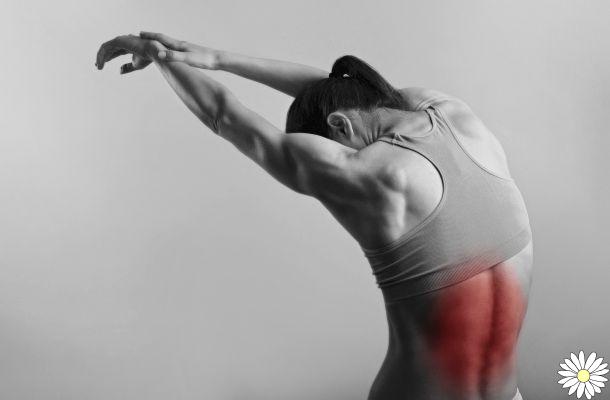
Benefits of postural gymnastics
Postural gymnastics is a useful one therapeutic tool in all those situations in which the body exhibits pain or mobility restrictions, especially if these concern the spine.
In fact, the back it is a supporting pillar around which the rest of the body moves. In addition, she is involved in both dynamic than static movements and for this reason he is often our main victim of pain.
The entire posture revolves around the spine. This is why postural gymnastics can be useful in all those problems that involve it such as scoliosis, but also in neck pain And in the lower back pain.
Controindicazioni
There are no real contraindications to postural gymnastics, but it is essential to have a personalized program to avoid exposing the patient to risks deriving from movements not indicated for his particular condition.

Postural gymnastics method Mézières: exercises to correct posture
These are just some examples of exercises that are typically proposed during postural gymnastics sessions.
It is good to perform them under the supervision and indication of a specialist who will choose the best exercises for the specific problem. Furthermore, it can guide the patient to rediscover these movements which may seem trivial but require an important level of concentration and proprioception.
All these postures must be maintained for a progressively longer time. Starting from a minimum of 30 '' to a maximum of 2 minutes. Perform three to five repetitions for the same exercise, interspersed with a pause of at least 30 ''.
1 - Team to the wall for lower back pain

Position yourself lying on your stomach with your legs stretched out forming a square of 90 ° with respect to the pelvis. the pelvis must be brought in retroversion (the idea is to bring the hips and pubis closer to the sternum) to make the lumbar area adhere completely to the floor.
It can be helpful in maintaining this posture perform it near a wall or an espalier so that you can rest your legs on it.
Starting from a position with legs gathered to the chest and stretch them upwards during an exhalation phase.
Try to stretch your legs as much as possible trying to "gain" during the expiratory phase. Once you have become confident in this posture, you can further lengthen it by bringing your foot into the "hammer" position.
If the posture is performed correctly you will feel a distension of the muscles posteriorly with particularit is beneficial for the lumbar area.
2 - Seated team

Sit with your back leaning against a wall to which it adheres completely, while the legs stretched out in front of us have the heels in contact.
During the expiratory phase try to obtain the maximum lengthening of the spine by flattening the curves against the wall, in the inspiratory phase keep. The idea should be to stretch towards the ceiling as if there were a thread that starts from the center of our head and pulls us up.
The hands can be supported on the thighs but do not exert any force.
This exercise can be made more intense by bringing the arms in turn squared with respect to the trunk so that the shoulder and elbow are on the same line: at this point, bring the elbows closer to the trunk, maintaining contact with the rear wall and trying to bring each other closer together. their shoulder blades.
Also in this case a good job of elongation of the posterior chain is obtained and the structure of the thorax and back but also of the cervical area is strengthened.
3 – Mézières method: standing team
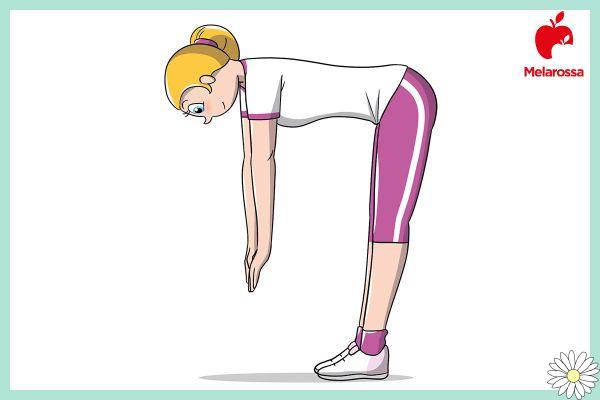
The third team is a posture that is done standing: keeping the legs straight and the heels together during an exhalation, flex the torso forward until, if possible, an inclination of the torso of 90 ° with respect to the pelvis is reached, while keeping the back straight and head aligned.
To get the best possible result, try to keep your pelvis aligned with your feet as much as possible and don't shift your weight forward. Also in this case we can imagine a thread that passes through our entire column and that, coming out of the head, pulls us, making us stretch forward while we are pulled back with our hands.
To return to standing and avoid injury, bend your knees before standing up.
This posture also produces a posterior stretch effect.
4 - Postural gymnastics: exercise for the neck
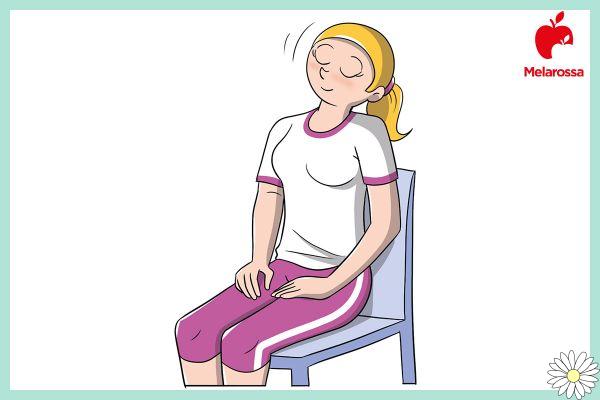
From the sitting position with the hands resting on the thighs, bring the shoulders away from the ears and the shoulder blades close together trying to reach the maximum elongation of the cervical area. Imagine a thread pulling our head towards the ceiling. Try to maintain maximum stretch for at least 30 ''.
From the same position, perform all joint movements of the cervical area in a slow and controlled manner, accompanying them with breathing. Once you have reached the maximum possible movement in one direction, hold that position for a moment before returning with your head to neutral.
So, do:
- rotations (no movement with the head)
- inclinations (bring ear closer to shoulder)
- flexion of extensions (movement of yes with the head avoiding to accentuate too much the extension).
Repeat a minimum number of 6 times each movement, focusing on the position of the shoulders which must be relaxed and the shoulder blades which must be close together.
It may be helpful to perform these mobility exercises in front of a mirror to check the performance.
.
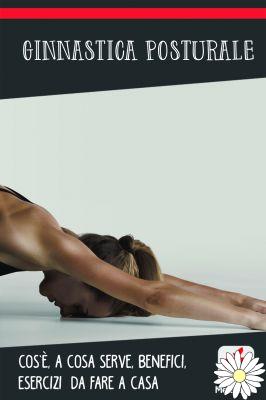
You might also be interested
 Swollen belly
Swollen belly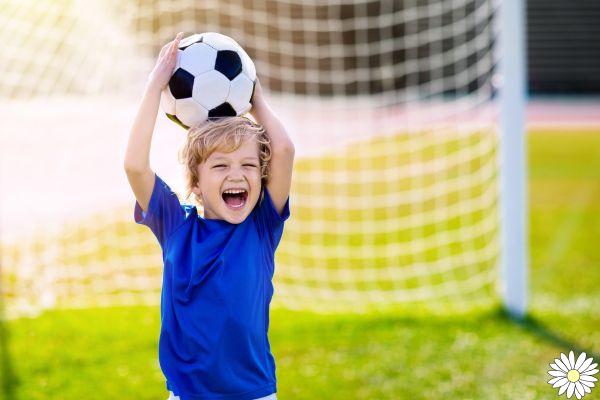 Sports for children
Sports for children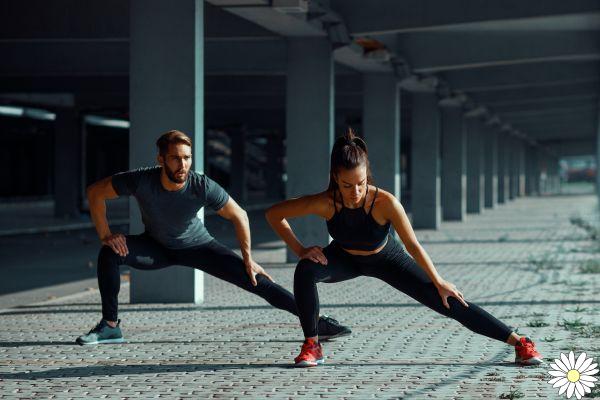 Couple sports: benefits and fitness circuit to tone up and improve the relationship
Couple sports: benefits and fitness circuit to tone up and improve the relationship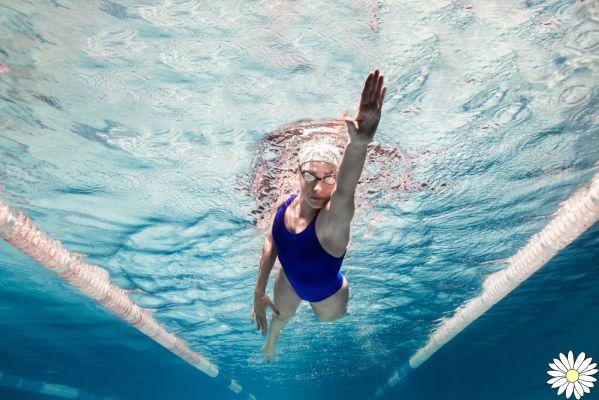 Benefits of swimming: dive into the water to get back in shape
Benefits of swimming: dive into the water to get back in shape Kegel exercises
Kegel exercises Chest exercises at home: 4 variations of push-ups to do at home
Chest exercises at home: 4 variations of push-ups to do at home Breast cancer: five-a-side football stands out among the sports that are good for you
Breast cancer: five-a-side football stands out among the sports that are good for you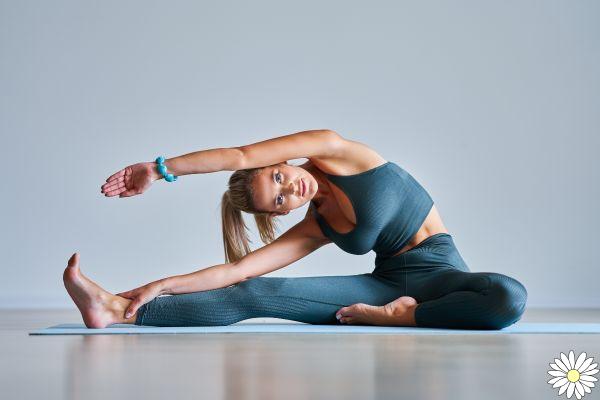 Muscle awakening: what it is, benefits, video lesson to recharge your batteries
Muscle awakening: what it is, benefits, video lesson to recharge your batteries Gym dumbbells: the best on the market and why buy them
Gym dumbbells: the best on the market and why buy them


























